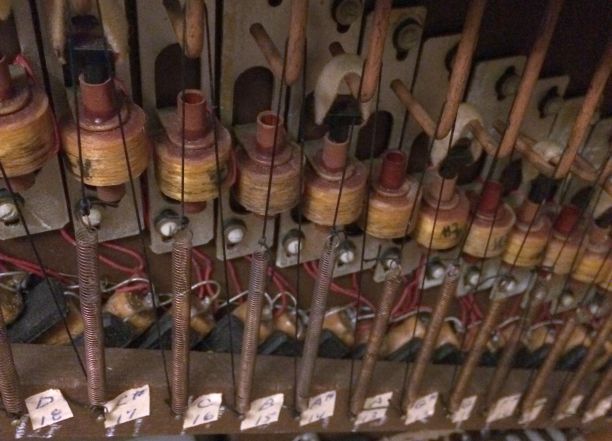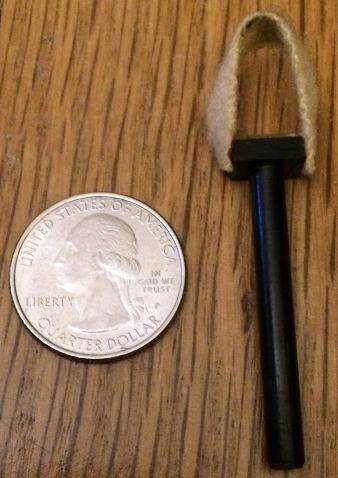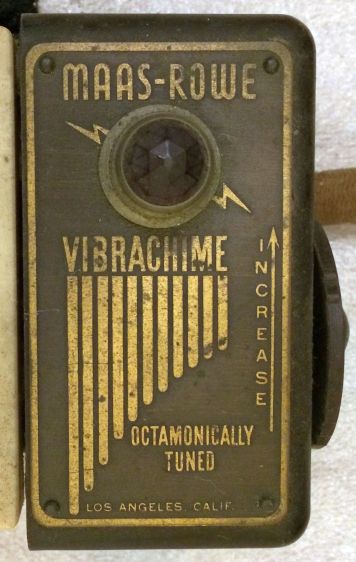Vibrachime
The Mass-Rowe Vibrachime is composed of a keyboard, a set of chime rods and strikers, an amplifier and a speaker.Inside a hinged wooden cabinet, electromechanical strikers hit the bent end of heavy gauge wire rods, where each wire is cut to a specific length to produce a particular note.
The Model 80 (pictured here) has 21 wire rods that are tuned with a strong major third partial.
(From right to left)
- A
- A♯
- B
- C
- C♯
- D
- D♯
- E
- F
- F♯
- G
- G♯
- A
- A♯
- B
- C
- C♯
- D
- D♯
- E
- F





